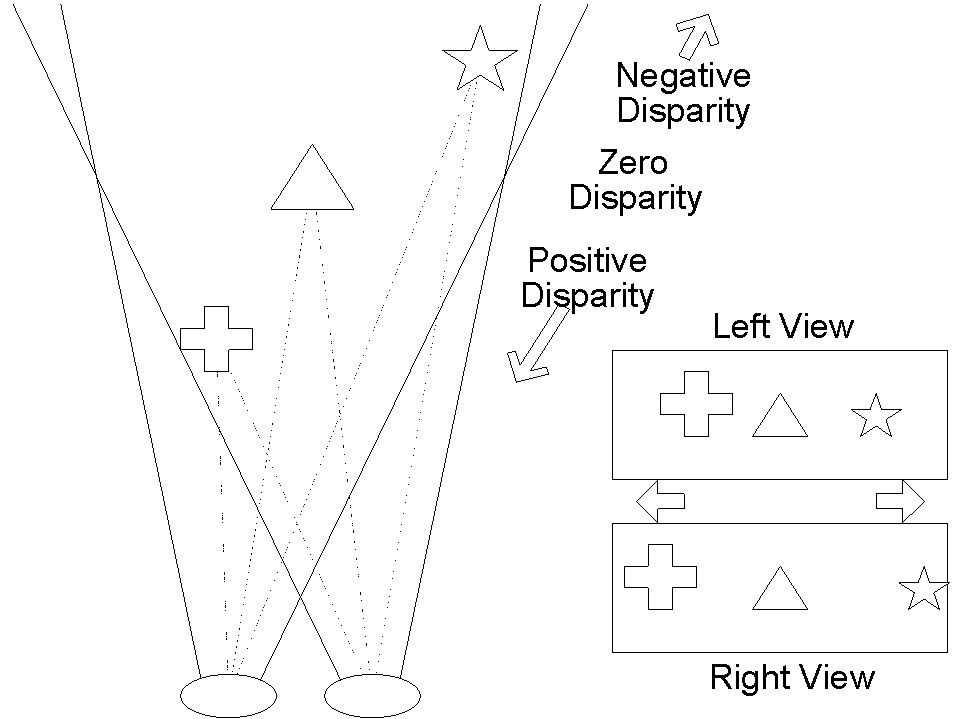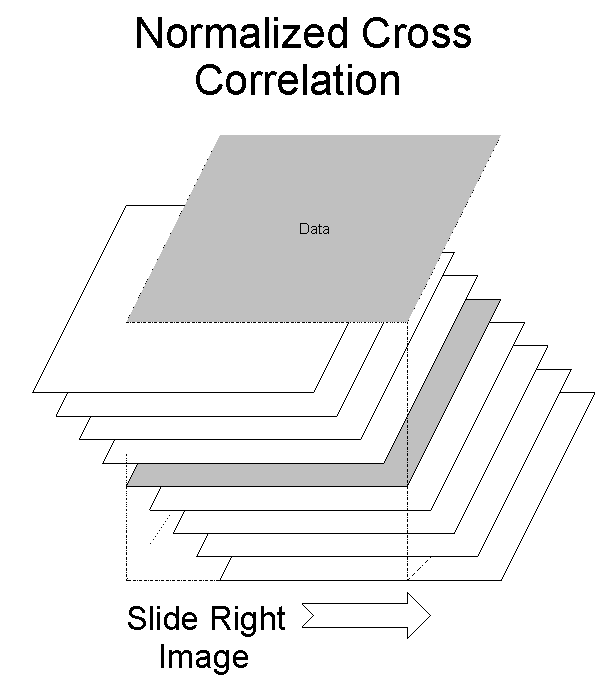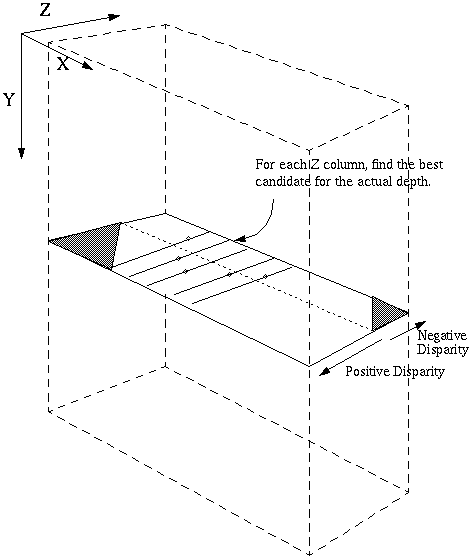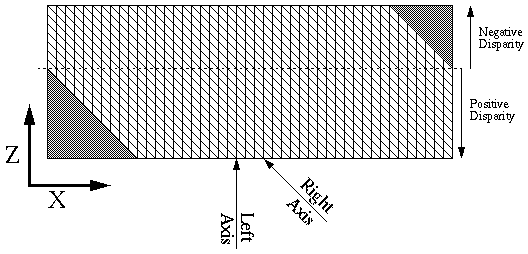

We find this disparity by observing the normalized cross correlation between the left and right images. Different similarity measures have been used in the literature, but it has been shown that the zero mean normalized cross correlation and the zero mean sum of squared differences tend to get better results. This estimate is independent of the differences un brightness and contrast due to the normalization.

The normalized cross correlation of two windows can be written as follows (with f and g being the intensity values of M x N images at a given position). The variable d refers to a disparity between the two images. In our case, the correlation is performed along the epipolar line. If for any point in the left image, the search window is assumed to be within d = [-w, w] in the right image.
 where
where



The output of the cross-correlation is a 3D matrix. This diagram shows it's configuration:

This next diagram is a detail of the cross-section in the matrix. Notice
that the left image has a depth axis that lines up with the Z axis and the
right image has a depth axis that is along the diagonals. This is because
the cross-correlation kept the left image stationary, while the right image
moved. It is important to keep in mind that neither the left or right
correlation is more important than the other.

The second stage is to extract the correct depth from the correlation matrix. We will have a depth corresponding to every pixel in the image so for each (i, j) point, we get a depth column. This vector contains correlation coefficients and we want the depth of the best match. With a simple case, we simply take the location of the maximum value in the vector. Here is a more complicated/reliable method:
Find each relative peak has a value greater than or equal to its 4 connected neighbors in the uncompressed correlation cube. If we apply multiscaling to the image, we can greatly improve our ability to find the actual disparity, considering a number of low pass images and redefining a peak as having a value greater than or equal to one half the value of the strongest peak along each viewing direction. This basically limits the search space by removing any peaks that are relatively weak. We have arbitrarily chosen to define one half the value of the strongest peak.